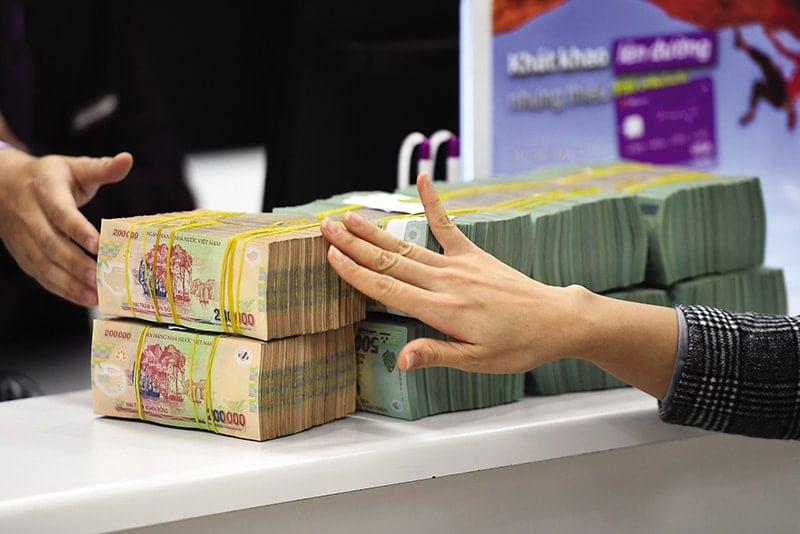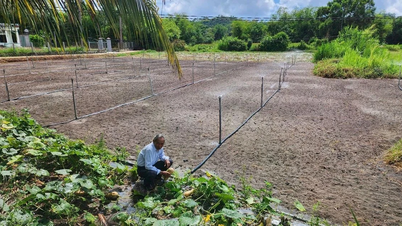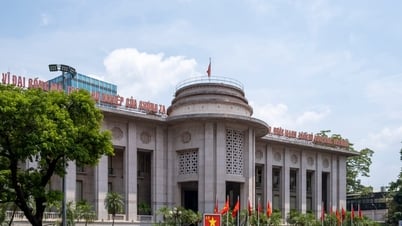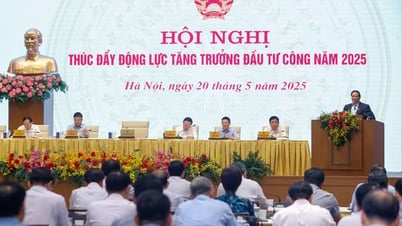Creating a solid legal corridor to handle bad debt
The State Bank of Vietnam (SBV) has just announced information related to the Draft Law amending and supplementing a number of articles of the Law on Credit Institutions (CIs).
This draft aims to institutionalize important contents in Resolution No. 42/2017/QH14 of the National Assembly on piloting bad debt settlement, thereby perfecting a more synchronous and effective legal framework in handling bad debt, contributing to strengthening the stability and safety of the credit institution system.
The implementation of Resolution 42 has shown many positive results in the handling of bad debts. However, some important regulations have not been legalized, causing difficulties in implementation, especially related to the right to seize, handle secured assets and recover debts.
According to the State Bank of Vietnam, the bad debt ratio tends to increase, creating considerable pressure on the banking system, especially in the context that 2025 is identified as a pivotal year to accelerate and break through to complete the goals of the 2021-2025 term, including the target of a minimum GDP growth of 8%.
The causes of the above situation come from many factors: the global economy still has many potential risks; the domestic economy faces many difficulties; the real estate, stock and corporate bond markets recover slowly; the management capacity of some credit institutions is not commensurate with the scale of operations; meanwhile, the debt trading market has not developed as expected. Debt trading organizations also encounter many difficulties in handling secured assets due to the lack of a clear and unified legal mechanism.
Faced with that situation, the State Bank of Vietnam said that this Draft Law continues to legalize the contents of Resolution 42 that have proven effective in practice. Specifically, the Draft includes provisions on the right to seize secured assets, seize assets of the party subject to enforcement, return assets as evidence in criminal cases, and at the same time adds provisions on return of secured assets as evidence or means of administrative violations.
Another notable point in the Draft is the proposal to amend the authority to decide on special loans. Accordingly, instead of the Prime Minister, the State Bank will be the agency to decide on special loans with an interest rate of 0%/year and without collateral.
This decentralization aims to enhance the role and responsibility of the State Bank in managing monetary policy, while ensuring proactiveness and flexibility in supporting credit institutions facing liquidity difficulties or needing urgent intervention to protect the safety of the financial and banking system.

Strengthening legal conditions
Financial experts assess that legalizing important regulations on bad debt handling, while clearly decentralizing special lending authority, not only contributes to improving the operational efficiency of the banking system, but also plays a key role in protecting the stability and safety of the national financial system against potential risks.
This is considered an important step in strengthening the confidence of investors, international organizations and economic entities in the management capacity and sustainability of the Vietnamese banking sector.
The draft Law amending and supplementing a number of articles of the Law on Credit Institutions is expected to be submitted by the Government to the National Assembly at the 9th Session of the 15th National Assembly next week.
If passed, this law is expected to create a more transparent, synchronous and effective legal corridor for bad debt handling as well as all credit and banking activities in the context of complicated developments in the world and domestic economy.
The phenomenon of bad debt is showing signs of increasing sharply in the first quarter of 2025. The causes come from many factors such as the consequences of the COVID-19 pandemic, the impact of natural disasters, the termination of the validity of Circular 02/2023/TT-NHNN on debt repayment restructuring, along with the lack of synchronization in the system of handling secured assets.
According to aggregated data, as of March 31, 2025, the total outstanding loans of 28 banks that have published financial reports reached more than VND 12.3 million billion, an increase of nearly 4% compared to the beginning of the year. However, at the same time, the bad debt ratio has increased significantly.
Notably, while bad debt is increasing rapidly, the bad debt coverage ratio (ie the risk provision balance over total bad debt) at many banks tends to decrease compared to the end of 2024.
According to data from Wichart, by the end of the first quarter of 2025, the risk provision balance of listed banks was about VND212,460 billion, up only 2.33% compared to the end of last year, while the total bad debt balance increased by nearly 17%, reaching approximately VND265,549 billion. As a result, the bad debt coverage ratio of the whole industry decreased from 91.4% to about 80%, a decrease of more than 11.4% in just one quarter.
Regarding prospects, Dr. Nguyen Huu Huan (Ho Chi Minh City University of Economics) commented that the trend of bad debt in the coming time will depend largely on external factors, such as global geopolitical developments and the results of international trade negotiations.
Although the situation can develop in both positive and negative directions, Mr. Huan believes that if Resolution 42 is officially legalized, it will be an important legal tool to help banks handle bad debt more effectively and sustainably in the coming period.
Source: https://baodaknong.vn/hoan-thien-khung-phap-ly-de-xu-ly-triet-de-no-xau-253087.html






![[Photo] Prime Minister Pham Minh Chinh chairs conference to promote public investment growth momentum](https://vphoto.vietnam.vn/thumb/1200x675/vietnam/resource/IMAGE/2025/5/20/7d1fac1aef9d4002a09ee8fa7e0fc5c5)


























































































Comment (0)